Glendale-Hyperion Bridge
1928 – Merrill Butler
From Ettrick Street to Glenfeliz Boulevard – map
Declared: 10/20/76
Man, this Glendale-Hyperion Bridge is huge and not a little complex. In fact, the whole thing is treated as six different structures: there are two chunks of Hyperion Avenue bridge, spanning Riverside and the I-5; in between, the viaduct portion over the L.A. River; don’t forget the two Glendale Boulevard sections – north and south, each twenty-eight-feet wide and about 400 feet in length; finally, included in the group is the Waverly Drive Bridge, crossing over Hyperion near the landmark’s western edge.
Top shot taken from Waverly Drive Bridge, bottom shot from the city's Dept of City Planning website.
Merrill Butler, Engineer of Bridges and Structures for the city’s Bureau of Engineering from 1923 to 1961, gets the credit as designer of the monument. The total length of the main portion is close to 1,400 feet. Crews used more than 35,000 cubic yards of concrete and 6,000,000 pounds of reinforcing steel in the total construction. They also drove about 1500 wooden and 3200 concrete piles to support the piers and abutments. There are thirteen arches: two are 135-feet each; eight are forty-eight feet; one is sixty-eight feet; and two stretch 118-feet.
Top picture is the bridge over Riverside Drive, the lower is courtesy of the Los Angeles Public Library Photo Archive.
The Board of Public Works received construction bids on March 31, 1927 for the project, building a new bridge to replace an old wooden trestle. By May 18, the only contract outstanding was “the one for the separation of the grade structure between Glendale avenue [sic] and Riverside Drive.” I’ve seen several different financial figures attributed to this bridge, but, that spring, the total project cost was pegged at close to $2 million, with the county chipping in $660,000 and the Pacific Electric Railway and the city dividing the rest. Construction began May 27, 1927.
Courtesy of the Los Angeles Public Library Photo Archive. Dated December 4, 1928.
Speaking of the P.E., the Glendale-Burbank line ran over the L.A. River just south of the bridge. Go to Tom Wetzel’s page here and scroll down to see a fantastic color shot of the Red Cars crossing the river. The tracks are long gone, but the old cement piers still stand:
That October, the L.A. Times was reporting officials were still promising the span would be finished no later than May 28, 1928, the date originally planned for completion. That date wasn’t chosen at random, I’m guessing. The bridge was scheduled to be a memorial to those who died fighting in World War I, and 5/28/28 was Memorial – or Decoration – Day. The bridge, though, wouldn’t be near ready by then.
As construction dragged on, opening day was pushed off time and time again. For a while, it looked as though it’d be ready for traffic by Armistice Day, November 11, 1928. However, it wasn’t until the end of February 1929 when the Glendale-Hyperion Bridge was completely completed.
On May 30, 1930, four days after Decoration – or Memorial – Day, the Glendale-Hyperion Bridge finally got its official dedication with hundreds of folks turning out for the to-do. Harry A. Towers of the American Legion dedicated the future monument “to the memory of the heroes of the World War who paid to their country the last full measure of devotion.” The Firemen’s Band and Mrs John Wise, soprano, belted out a few tunes. Among the speakers on hand with the designer Butler was Hugh McGuire, the president of the Board of Public Works. Here’s a bleak picture of the memorial, on the viaduct’s south side, just west of the river:
On Riverside Drive.
Just north of the viaduct is one of the few pedestrian bridges to cross the L.A. River. This one is the Sunnynook Footbridge. I had to cross not once, but twice. My crossings were the two least pleasant experiences I’ve had since starting this blog. Here’s a picture of the footbridge, with a photo taken from said structure below it:
Speaking of footbridges, there’s one that spans the 5 freeway, too. You’d think it would’ve been as disconcerting crossing this as the Sunnynook, but it wasn’t to me. This shot was taken from there above the traffic (obviously):
Looking west from the Atwater side.
On June 9, 1928, Mr Harry Sperl, a SoCal distributor of Gardner cars, was the first person to drive over a section of the bridge. “Not even a truck had set wheels on the first unit of the new span,” trumpeted the L.A. Times. He was accompanied by A.M. Troxsan, superintendent of the bridge construction, in a Trojan roadster. In September, though, MGM starlet Dolores Brinkman nabbed the credit as the first person to drive across the whole span. She drove a Packard Eight Phaeton, for those of you keeping notes. Both of these incidents reek as the work of savvy p.r. men, and I wouldn’t bet Harry and Dol truly deserve these honors. Scope Ms Brinkman’s gams here.
The black and white shot, above, from the USC Digital Archive, is interesting for a couple of reasons. First, most obviously, it's pre-5. The freeway would go on to plow under one of the bigger arches shown, the one on the right. Also, you can see the Pacific Electric bridge at the far right.
Today, the bridge is targeted for a whole bunch of improvements including widening and replacing walkways, on-ramps, off-ramps, and the bridge itself, adding railings, dropping in a center median, and lots of seismic improvements. I’m glad to see there’s talk of adding a pedestrian crossing over Glendale Boulevard north, just east of the river. I am, however, disappointed there’s no mention of removing the human poo on the steps leading from the viaduct down to the riverside (no, there’s no picture).
Sources:
“Bridge Will Link Cities” The Los Angeles Times; Feb 28, 1927 p. A1
“Contracts for Bridge Work Given” The Los Angeles Times; May 19, 1927, p. A5
“Work Rushed on Bridge” The Los Angeles Times; Oct 9, 1927, p. E7
“Glendale-Hyperion Viaduct Rapidly Progressing” The Los Angeles Times; Jun 10, 1928, p. G12
“Glendale-Hyperion Span Complete in November” The Los Angeles Times; Aug 26, 1928, p. H6
“First Car Crosses Span” The Los Angeles Times; Sep 30, 1930, p. G9
“Bridge Traffic To Be Speeded” “Glendale-Hyperion Span Complete in November” The Los Angeles Times; Nov 4, 1928, p. E5
“Bridge To Be Open By New Year” The Los Angeles Times; Nov 19, 1928, p. A18
“Hundreds at Viaduct Ceremony” The Los Angeles Times; May 31, 1930, p. A1
Up next: Fire Station No. 27
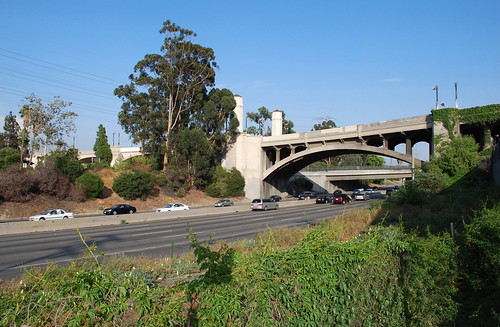

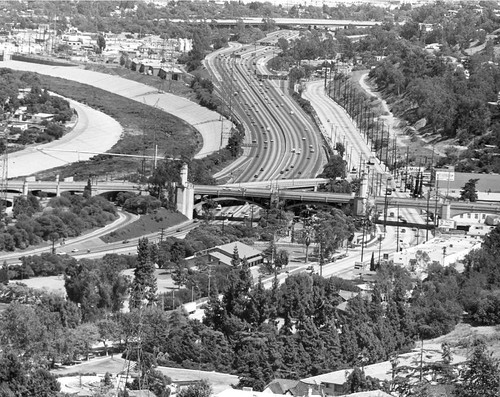
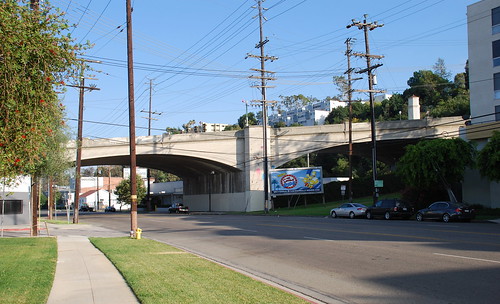
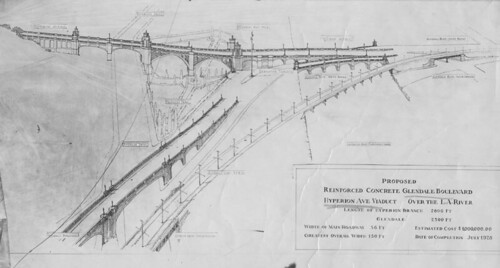

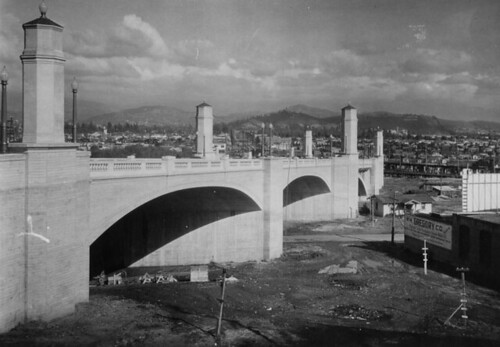

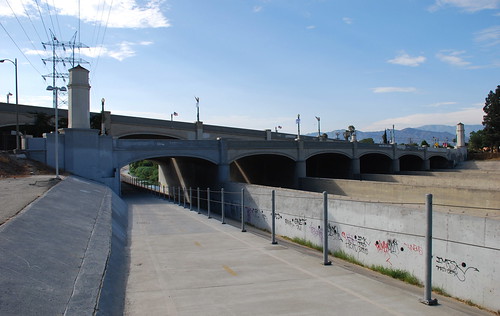

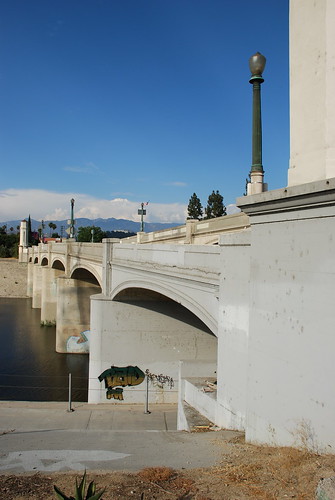
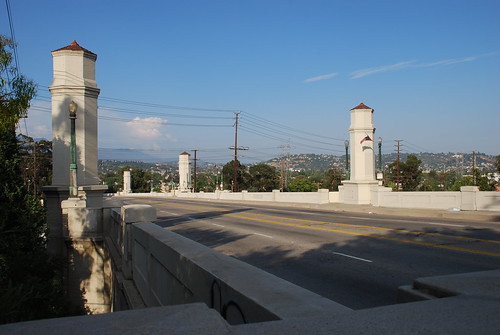
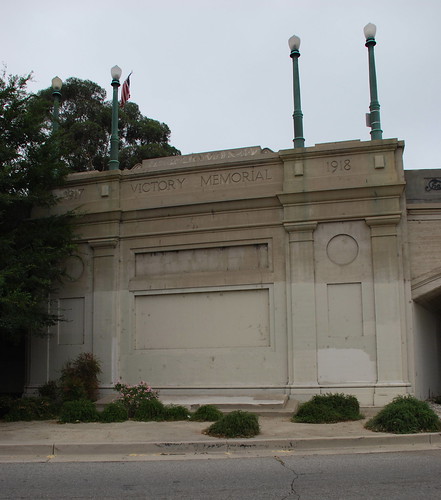
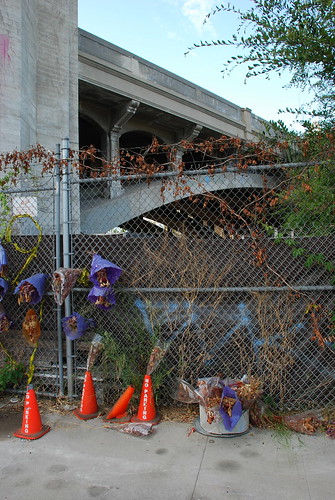

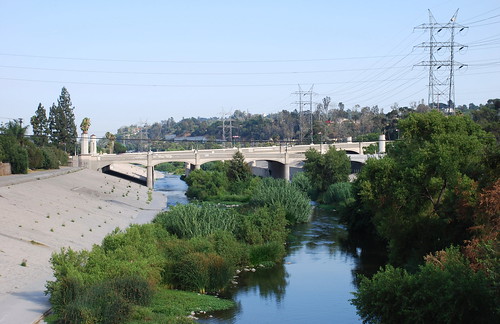
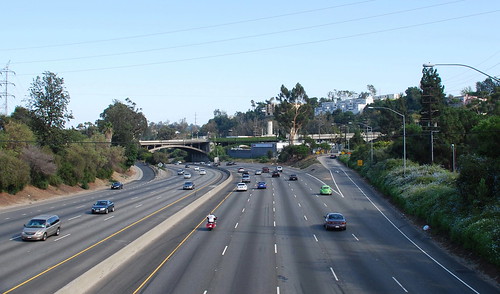
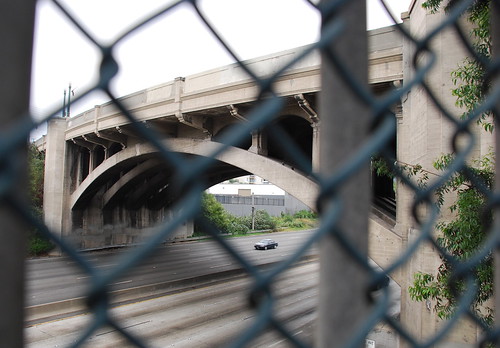
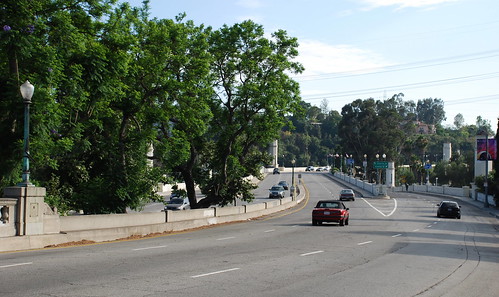
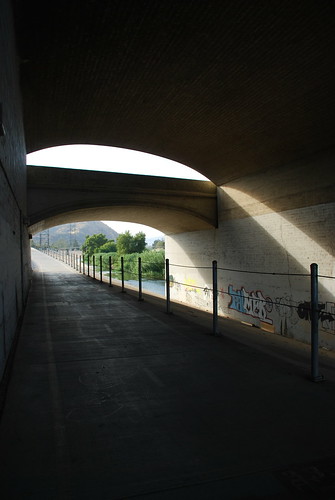
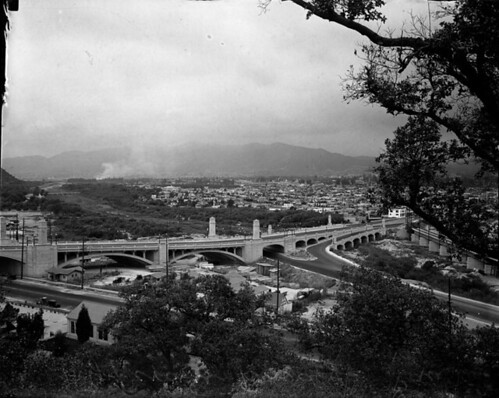

You can drive by something for years and not pay much attention - it's just always been there.
ReplyDeleteThen with a detailed history, you recognize what a major engineering achievement in the '20s this was. Thanks!
Hey, thanks for your help on this one, Darrell.
ReplyDeleteI'm echoing darrell above - driven by this a million times and never knew the history. Thanks so much, Floyd!
ReplyDeletep.s. Dying to check out that footbridge!
Thanks, gc. RE: footbridge. Not again.
ReplyDeleteso what happen on the foot bridge?
ReplyDeleteI just wasn't crazy about the height (or width) of the bridge.
ReplyDeleteI am an artist who has painted this bridge several times without knowing anything about it so I was happy to stumble upon your blog. I have added a link to your blog from my current posting and hope you would do the same. Great information. Thank you for all the info.
ReplyDeletehttp://sharonweaver.com/blog/10129
Thanks, Sharon. I love that painting.
ReplyDeleteI did a river walk with FOLAR this afternoon in the southern portion of the Glendale Narrows - I didn't realize how nice the LA river was.
ReplyDeleteThis is a great post. I've just started an LA blog myself and was doing research for a Glendale-Hyperion Viaduct entry. I don't think I can top this, though. I really love the links to the Glendale-Burbank Line Tour and the old photos and drawings from the LA Library. Really amazing.
ReplyDeleteThanks, The Sights The Sounds. Best of luck with the blog.
ReplyDeleteThank you for such a great description of one of my grandfathers bridges. I love
ReplyDeletereading about his accomplishments!
Sincerely, Merrill Butler III
Just noticed bridge was in Universal's "Never Give A Sucker an Even Break" w/ W.C. Fields.
ReplyDeleteI really enjoy your blog, Floyd! I lived as a boy in Atwater, in the '60s and early '70s. The L.A. River looks much improved! The Sunny Nook footbridge was a little scary for us kids, too! But it had to be crossed to get to Griffith Park.
ReplyDeleteThanks, anonymous. It's been nearly two years since I crossed that footbridge, and it still gives me the willies.
ReplyDeleteBarry, it's been a long time since I've seen Sucker, but you've just given me reason to give it another watch. Thanks.
And hats off to your grandfather, Merrill, and his bridge. Long may it stand.
I did not know if you were aware that Disney California Adventure would be paying homage to the Glendale-Hyperion Bridge in its new Buena Vista Street entryway.
ReplyDeleteThought you might be interested.
Thanks for the information, BonVivant.
ReplyDeleteFloyd, When the first proposal to retrofit came out in 2009 buried deep in one paragraph was some info claiming that the Glendale Blvd bridge over I5 not in the project was the original Redcar bridge moved.It is possible
ReplyDeleteFloyd, Deep in the Hyperion Bridge retrofit plans I came across a paragraph stating that the redcar bridge over the river was moved to the Glendale Blvd. I5 bridge. The bridge is metal with expansion joints. Any info?
ReplyDeleteHa ha OMG I can't stop laughing. Cause I'm picturing the your avitar crossing you said it was the worse thing OMG ha ha ha I have seen 4 people get hit right there including the police officer that was killed helping some complete moron it was the worse one I ever saw he was hit twice I was on my balcony being nosy like always. I was born and raised in this area I know this crossing deal. Here's something you might not know but you know Los Feliz Boulevard? Well they have approximately ''only seven crosswalks with lights'' from Western Boulevard in East Hollywood all the way to Brand Boulevard in Glendale ''7'' that is about an 11 mile stretch People pay all this money to live there and I don't know what they're paying for because they can't even get a crosswalk. They have housekeepers that take the bus there so there is foot traffic. I just don't get it.
ReplyDeleteI grew up in Atwater, down by the river, as did my Mother and Grandmother. My Grandmother remembered a big flood, and the wooden bridge collapsing with wagons on it. That had to be the flood of 1926? She was born in 1920.
ReplyDeleteThe river runs through our lives, it was such a part of our childhoods, it was where we fished for pollywogs in Summer, and watched the raging flood waters in Winter. My Grandmother fed the hobos bread, durung the Depression, in their camps on the river. And a child fell off of one of the pipes, to his death, he was in my class at elementary school. (Atwater Avenue)
Thank you for a great blog post.
You're welcome and thanks, Joanie B.
ReplyDeleteAny idea what happened the the dedication plaques....or where they never put on the bridge?
ReplyDelete